BY JON COHAN, RICK MATTINGLY, AND ANDY DOERSCHUK
Consider for one moment the magnitude of what’s going on here. We’ve chosen 50 top drummers of all time who have had the most profound influence on the art form. Does this mean they were the greatest? Well, kind of, although the word “great” seems to imply that the following is a list of the best technicians who ever lived.
You see, we didn’t pick these guys because they played the fastest single-stroke rolls or the most limb-twisting polyrhythms in history (though some of them have). No. We tried to compile the drummers who had the biggest impact on … well … you — whether you know it or not.
So while some made the final cut due to their radical techniques, others were included because they spearheaded a sound or a style that had never been tried before, and in the process, changed the direction of drumming. Forever.
Believe it — we know that we’ve opened a real can of worms here. We started with a long list that went several times beyond our target of 50 names, and then whittled it down, one by one, until we reached our goal. Still, it was agonizing, because all of the names on our long list were huge influences that had stood the test of time.
In fact, it turned out to be a ludicrous exercise. We ended up having to ask ourselves questions like: “Who is more important? Elvin Jones or Louie Bellson?” or “Ginger Baker or Keith Moon?”
While the answers to those questions might seem obvious to you, we felt obliged to make each comparison using the greatest care. And that’s because we knew that no matter who made it onto the final list, even if we named 1,000 drummers, we would still hear about our omissions from you, our readers, in no uncertain terms. In fact, we count on it. We want to stir things up a little out there, create some controversy, take a stand, be daring, do something ballsy.
So after you’ve read the following profiles, go ahead and write us an inflammatory letter, tell us how we screwed up, or at least give us your top 50. We can’t promise that we’ll publish your letter (though we might), but it will give us something amusing to do after our deadline. —Andy Doerschuk
50 Most Important Drummers Of All Time
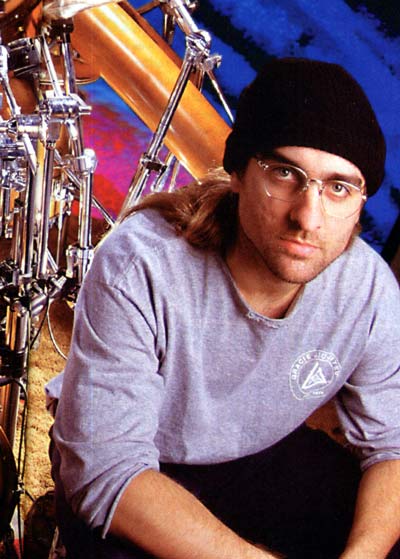
Tim Alexander
Few drummers of the ’90s had as much impact on progressive rockers as Alexander. In many ways, the former Primus drummer is an aberration among the grunge bashers of the present day, since his playing is highly analytical, his double-bass kit is larger than those of most fusion drummers and he is more often compared with Neil Peart than Dave Grohl.
With Primus, Alexander developed a style that involved elaborate linear grooves and syncopated double-bass patterns that ventured well beyond standard sixteenth-notes. He has recorded six albums with Primus and a handful of others with artists like bassist Michael Manring and his own side band Laundry.
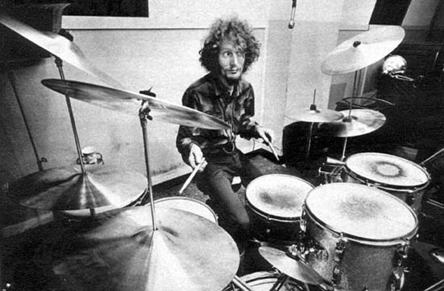
Ginger Baker
Baker was one of the most imitated ’60s drummers, due to his work with Cream. He can take credit for the trio’s sound — jazzy improvisation, blues, psychedelia and hard rock with classical affectations — since, without his caustic input and penchant for jazz, they could have been just another blues band.
Baker’s style was a punishing double-bass frenzy, punctuated by extended solos on tracks like “Toad” and odd-meters on tunes like “Do What You Like.” Cream split up after only two years, and Baker floated through a variety of projects, including the underrated Blind Faith and the overly ambitious Airforce. In recent years he has become a prolific solo jazz artist.
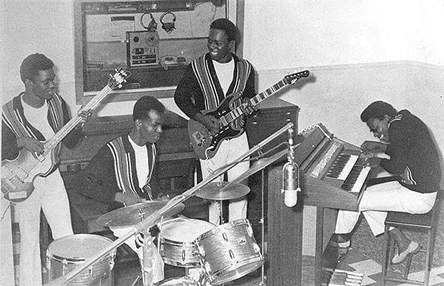
Carlton Barrett
Along with his brother, Aston “Family Man” Barrett on bass, Carlton Barrett laid down the “riddim” for The Wailers, reggae legend Bob Marley’s crackerjack backing band. Originally part of The Upsetters, Lee “Scratch” Perry’s in-house recording outfit, Barrett left to tour and record extensively with the Wailers, contributing his dub sensibility and organic playing to such reggae classics as “Jamming,” “I Shot The Sheriff” and “One Love.”
The classic Talkin’ Blues, released after Marley’s death, is an outstanding live account of the Wailers’ seamless rhythm grooves from their first U.S. tour. Barrett passed away in 1987, but left behind a body of work that helped define the roots-reggae style.
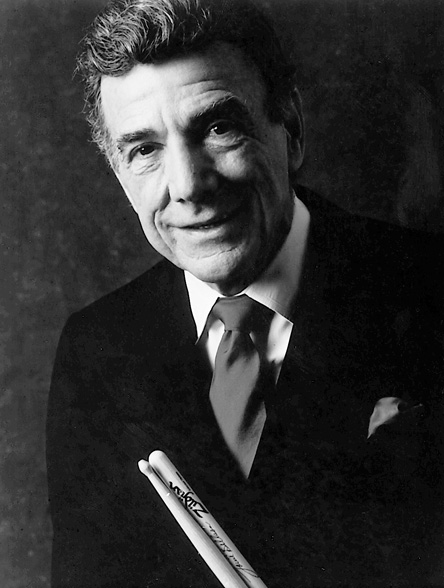
Louis Bellson
Bellson’s first recognition occurred at age 16 when he won the national Gene Krupa drum contest, and a couple of years later he replaced Krupa in the Benny Goodman band. After working with Tommy Dorsey and Harry James, Bellson joined the Duke Ellington Orchestra, proving himself not only as a drummer but also as the composer of “Hawk Talks” and “Skin Deep.”
Bellson later became musical director for his wife, Pearl Bailey, while maintaining an active recording and performing career of his own. He was the first to successfully implement a second bass drum in his setup, and his playing is notable for its technical precision and swing.
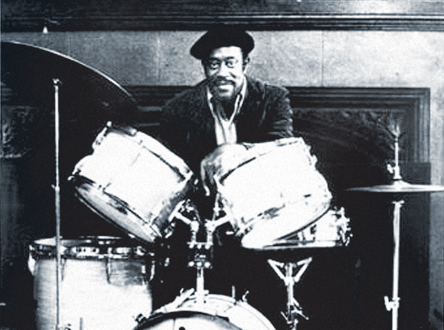
Fred Below
Born in Chicago in 1926 and schooled in jazz, Below helped forge rock and roll and electric blues drumming at Chicago’s legendary Chess Records. By combining a two-beat feel on the kick and snare with a swinging broken triplet on the hi-hat, Below drove the rhythm train on Chuck Berry’s landmark hits like “Rock And Roll Music” and “Johnny B. Goode,” influencing a whole new era of rockers like The Beatles, the Rolling Stones and The Beach Boys.
His work for Chess recording stars Little Walter, Bo Diddley, Elmore James and others still stands out today as a benchmark in the transition of the blues from its acoustic rural roots to an electric urban grittiness.
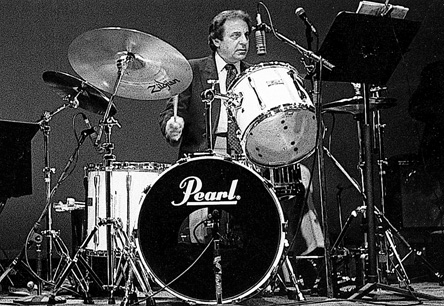
Hal Blaine
It would probably be easier to name the ’60s Top 10 hits Blaine didn’t play on than the ones he did. One of the world’s most recorded musicians, Blaine was the perfect studio ace; he provided great feel, intelligence and energy to records by The Beach Boys, Simon and Garfunkel, Frank Sinatra, The Byrds and countless others.
His milestone drum track for The Ronettes’ “Be My Baby” is a perfect example of Phil Spector’s Wall Of Sound that has been often imitated, but never duplicated. Ringo Starr and Jim Keltner, among others, have called Blaine a big influence. Still active in the drumming community, Blaine’s legacy continues to inspire new generations of musicians.
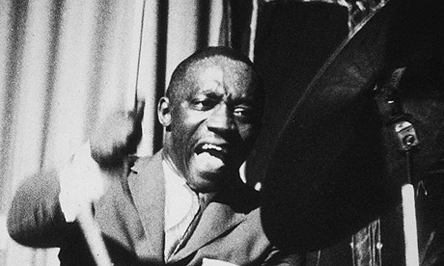
Art Blakey
His style of bebop was so aggressive that the term “hard bop” was coined to describe the music that Art Blakey and the Jazz Messengers played from the 1950s through the late ’80s. Blakey came to major prominence in the late ’40s as a member of Billy Eckstine’s band, which featured Miles Davis, Dexter Gordon and Fats Navarro.
After starting the Jazz Messengers, Blakey became known as one who could spot and develop young talent, and such luminaries as Lee Morgan, Wayne Shorter, Freddie Hubbard, Keith Jarrett and Wynton Marsalis got their early training in Blakey’s group. His drumming had a distinctive African influence, and was characterized by strong hi-hat backbeats and punctuated with dramatic press rolls.
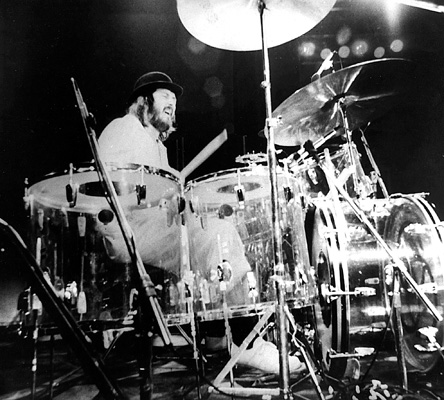
John Bonham
No drummer has ever matched the ferocious groove or mammoth sound Bonham unleashed with Led Zeppelin, though many continue to try. Born on May 31, 1948, he worked his way through a succession of little-known bands before replacing Jim McCarty in the final, short-lived incarnation of the Yardbirds in ’69, which would change its name to Led Zeppelin and forever define the sound of heavy metal.
Chemistry rules — Zeppelin wouldn’t have been Zeppelin without his unique ear, and Bonham might never have been recognized as a rock innovator without guitarist Jimmy Page’s compositions to hang his ideas on. He passed away on September 24, 1980, prompting Zeppelin’s demise.
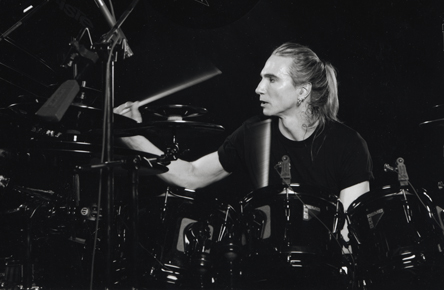
Terry Bozzio
As one of Frank Zappa’s legacy of brilliant drummers during the ’70s, Bozzio is best known by many chops-freaks for conquering the late composer’s most frightening drum chart, “The Black Page” [from Live In New York].
He has since reinvented himself many times over: first as a versatile sideman with progressive rockers UK — with whom he recorded Danger Money and Night After Night — then as bandleader and principal songwriter for ’80s pop hit-makers Missing Persons, where he reached the zenith of commercial visibility.
His most noteworthy work since then includes muscular drumming on Jeff Beck’s Guitar Shop and a curiously intensive study of drum-set ostinatos that has confounded and inspired thousands of drummers.
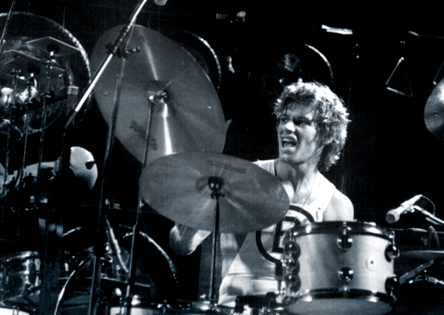
Bill Bruford
Mismatched percussion timbres and quirky rhythms played with a distinctly stiff feel — that’s Bruford, who first gained notoriety during the ’70s with Yes. In ’72 he replaced Ian Wallace in King Crimson, and recorded three of the band’s most challenging albums — Lark’s Tongue In Aspic, Starless And Bible Black and Red — which combined wild improvisation with tightly-orchestrated progressive fusion, and inspired some of his best recorded work.
After Crimson broke up two years later, Bruford tried his hand at a number of gigs before finally forming his own band, Bruford, to explore his jazz inclinations. In recent years he has appeared in reformed versions of both Yes and King Crimson, while continuing his jazz drumming with Earthworks.
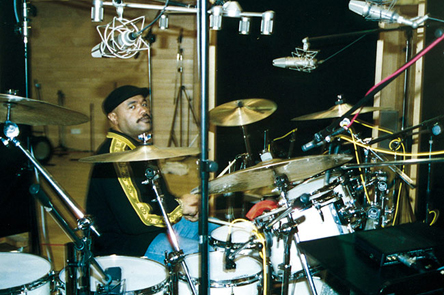
Dennis Chambers
Like Buddy Rich before him, Chambers’ drumming is a powerful mixture of technique and style. He can play faster with just his right hand than most drummers can with both put together. He has it all: independence, speed and taste.
But Chambers is not just a chop-meister; his drumming with the P-Funk All Stars proved that he is well-rounded enough to play a simple funk groove. Chambers is a powerful force in jazz music, having grouped with some of the best of the modern instrumentalists for some very exciting music. His playing is one of the bridges that will help carry drumming into the 21st century.
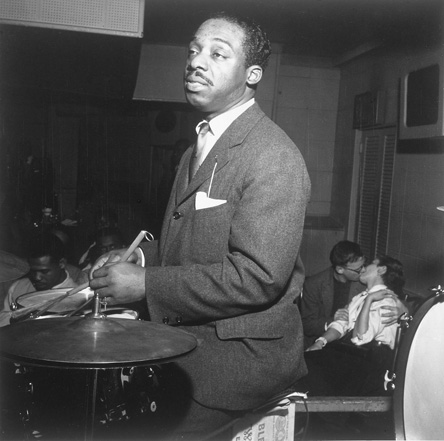
Kenny Clarke
More than any other single drummer, Kenny “Klook” Clarke defined the bebop style of drumming through his work with bop pioneers such as Dizzy Gillespie, Thelonious Monk and Bud Powell. Specifically, he made the ride cymbal the primary time-keeping element of his kit, using the bass drum and snare drum for offbeat accents.
The result was a very fluid way of playing that lent itself well to the blistering tempos the bop horn players preferred. Clarke was the original drummer in the Modern Jazz Quartet in the early 1950s, but then moved to Paris in 1956, where he co-led the Clarke-Boland Big Band until his death in 1985.
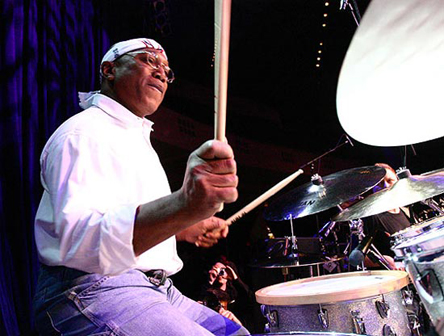
Billy Cobham
Something happened to Cobham between 1970 (when he recorded Bitches Brew andTribute To Jack Johnson with Miles Davis) and ’71 (when he formed Mahavishnu Orchestra with guitarist John McLaughlin), because his drumming facility leapt forward a billion light years.
Suddenly Cobham had the fastest hands in the world, played harder than most rock drummers, negotiated uncountable time signatures, slammed double-bass drums at blinding velocities, personified the concept of four-way independence and set a standard that most drummers couldn’t hope to achieve.
After leaving Mahavishnu in ’73, Cobham recorded two incredible releases — Spectrum and Crosswinds — that promised great things to come. They never did. But for those few years, he was the best there was.
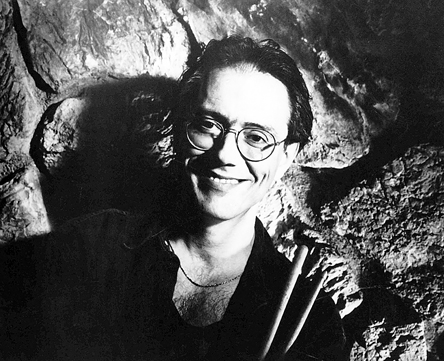
Vinnie Colaiuta
With a discography as long as your arm and as diverse as the Yellow Pages, Colaiuta has reinvented practically every musical style using seamless technique, big ears and a flawless feel. His most revered work was with Frank Zappa during the ’70s and ’80s.
After leaving Zappa’s band, he became the hottest session player in L.A., and recorded an incredible number of albums with such disparate artists as Natalie Cole, Duran Duran, Robben Ford, Allan Holdsworth, Michael Jackson, Madonna, Joni Mitchell, and Barbra Streisand, and released two solo albums: Vinnie Colaiuta and Stretch. In ’91, Colaiuta raised his profile further by working full-time with Sting, with whom he recorded Ten Summoner’s Tales and Mercury Falling.
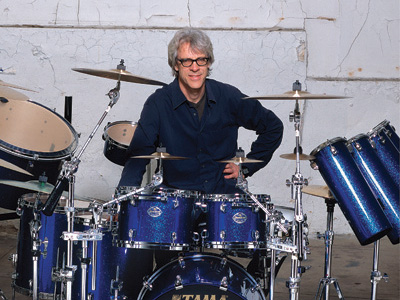
Stewart Copeland
While the Police was hardly a reggae group, Copeland introduced Jamaican rhythms to rock drumming in 1979 on the single “Roxanne.” For verses, he employed reggae’s bass drum one-drop and syncopated side-sticking, and then exploded into rocking backbeats on choruses and solos.
The son of an American diplomat, Copeland spent much of his youth overseas and eventually landed in London, England, in the early ’70s, where he joined Curved Air. After the Police became superstars, Copeland released an eclectic EP using the pseudonym Klark Kent, and has continued to pursue a career as a composer, rarely performing on drum set. Though he always battled tempo problems, he remains one of the most recognizable rock stylists of all time.
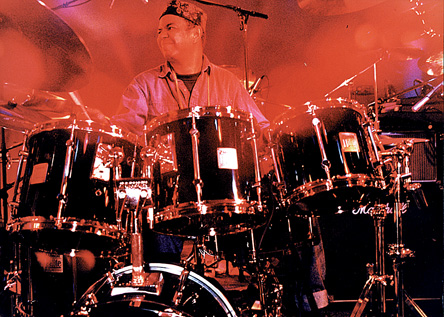
Jack DeJohnette
His work with Charles Lloyd and Miles Davis in the early 1970s put Jack DeJohnette at the forefront of the jazz-rock movement, with a style solidly based on jazz tradition but that also incorporated the rhythms and attitudes of rock, blues and funk.
His own groups such as New Directions and Special Edition displayed his concept of “multi-directional music,” blending a variety of genres including jazz, rock, reggae, Third World and Native American, and he has also achieved distinction as a composer and pianist. His work with the Keith Jarrett Standards Trio is among his best, and he is also a member of the Gateway Trio with John Abercrombie and Dave Holland.
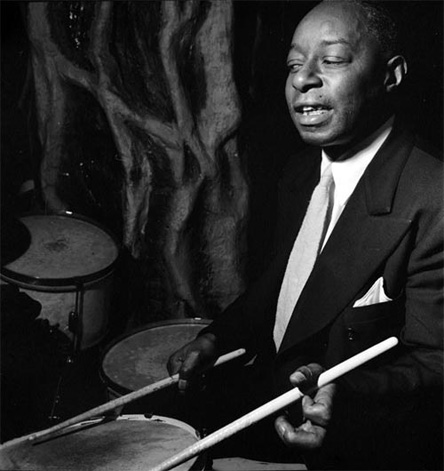
Baby Dodds
It was Warren “Baby” Dodds who made the transition from strict military-style drumming to the jazz style, smoothing out his snare drum press rolls into the rhythm that foreshadowed swing-era ride cymbal playing. He first came to prominence in New Orleans with the riverboat band of Fate Marable in 1918, and he made his first recordings in Chicago with the King Oliver Creole Jazz Band in 1923.
He spent the next two decades in Chicago recording with such musicians as Louis Armstrong, Jelly Roll Morton, Bunk Johnson, Sidney Bechet and others. He is credited with being one of the first drummers to play fills between phrases, and his style was a direct forerunner to that of Gene Krupa.
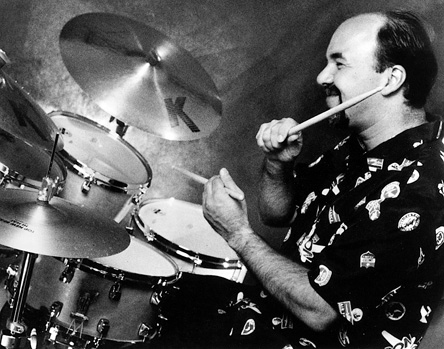
Peter Erskine
One of the most versatile drummers ever, Peter Erskine has played big band swing with Stan Kenton and Bob Mintzer, electric fusion with Weather Report and Steps Ahead, and rock and funk with Steely Dan and Boz Scaggs, and appeared on countless recordings with such artists as Eliane Elias, Gary Burton, Kenny Wheeler, Joni Mitchell, Mike Stern, Marc Johnson’s Bass Desires and John Abercrombie.
It is with his own trio on ECM, however, that Erskine has best showcased his own style, best described as a compositional approach to drumming that produces very musical results. Although grounded in straight-ahead bebop, Erskine is equally comfortable with in-the-pocket funk as with avant-garde, free jazz.
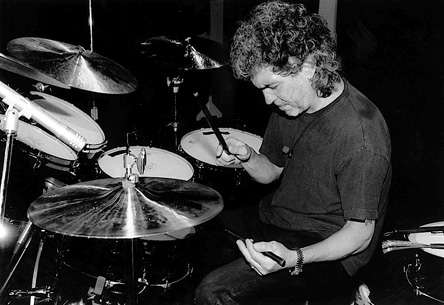
Steve Gadd
If all Gadd ever did was play on Paul Simon’s “50 Ways To Leave Your Lover” and Steely Dan’s “Aja,” he would still have played an important role in the evolution of contemporary drumming. Of course he did much more than just those two songs; he is as well-rounded in jazz and Latin music as he is a keen interpreter of pop songs.
His fluent and effortless style conceals his incredible technical virtuosity, partly because he has always played exactly the right part for the music. His recorded work with Chick Corea, Stuff and Eric Clapton are lessons in time, taste and groove.
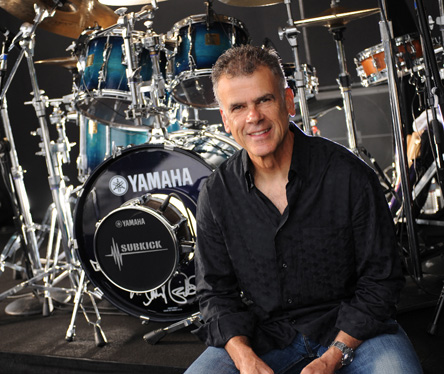
David Garibaldi
Before Garibaldi debuted with Tower Of Power in 1970, funk was roughly synonymous with soul. Then he changed everything with his explicitly articulated, zip-lock tight drum-set syncopations. Born in ’46 in Oakland, Garibaldi sharpened his dazzling technique with the 724th U.S. Air Force Band before joining TOP, with whom he remained for ten years and recorded eight landmark albums.
He later formed Talking Drums, an Afro-Cuban percussion group with Michael Spiro and Jesus Diaz, toured with Mickey Hart’s Mystery Box, and returned to TOP in ’98. While his drumming is an amalgam of his own influences — Zigaboo Modeliste, Bobby Columby, Greg Errico and James Brown’s drummers — it was the way he put them all together that made his contribution so vital.
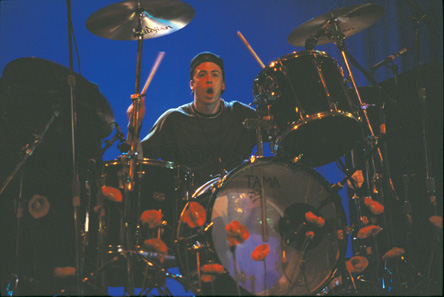
Dave Grohl
Grohl was the grunge drummer of the ’90s. With Nirvana he employed hard-hitting yet precise technique, dramatic dynamics, thrashing grooves, simple and direct fills and a massive sound. Born and raised in Virginia, Grohl got an early start in the music biz at the age of 18 with Scream.
He replaced former Nirvana drummer Chad Channing in 1991, and enjoyed unprecedented international success until Kurt Cobain’s suicide in April of ’94. Afterward, Grohl released the Foo Fighters self-titled debut album, for which he wrote the material, played the instruments and handled lead vocals. Today Grohl is the band’s lead singer and guitarist, and doesn’t play any drums on Foo Fighters’ new album.
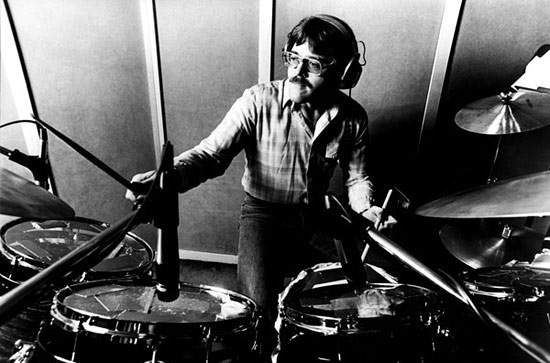
Roger Hawkins
Still working as a drummer and producer, Hawkins was part of the Muscle Shoals studio band that provided a slinky Southern vibe strong enough to lure artists like Aretha Franklin and Wilson Pickett to its Alabama studio. Made up of self-proclaimed white “crackers,” their soulful playing resulted from a background of country, r&b and gospel music.
Hawkins made drum history with his pseudo-reggae take on the Staple Singers’ classic “I’ll Take You There” and the finger-popping rhythm of Aretha Franklin’s “Respect.” His style was characterized by his capacity to lock in with the rest of the Muscle Shoals rhythm section and leave enough room for the artists to shine.
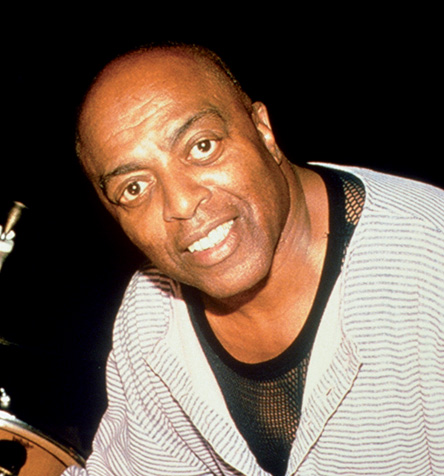
Roy Haynes
The very definition of “hip,” Roy Haynes has been a popular drummer-of-choice with cutting-edge artists for decades, working with Lester Young and Charlie Parker in the 1940s, Billie Holliday and Sarah Vaughan in the ’50s, Stan Getz, John Coltrane and Gary Burton in the ’60s, Chick Corea in the ’70s and Pat Metheny in the ’80s.
His sound evolved from that of Max Roach and Kenny Clarke, paving the way for drummers such as Elvin Jones and Tony Williams through his crisp, syncopated style that often implied the time rather than stated it outright, but that always had an undeniable sense of swing and drive.

Nicky “Topper” Headon
Peerless in the first generation of punk drummers, Headon had a spotty history with the Clash. He missed the session for the band’s self-titled debut album, but appeared on every other release, except for the last, 1985’s disastrous Cut The Crap.
Headon’s drum sound was always crisp, dry and tight, and he possessed a rock-solid tempo and slashing backbeat, which held together the band’s riotous arrangements. Headon even wrote one of the Clash’s biggest hits, “Rock The Casbah” [from Combat Rock], but history has lost track of the drummer after he left the band in ’82. Since then, it has been rumored that he landed in rehab and even in prison on drug charges.
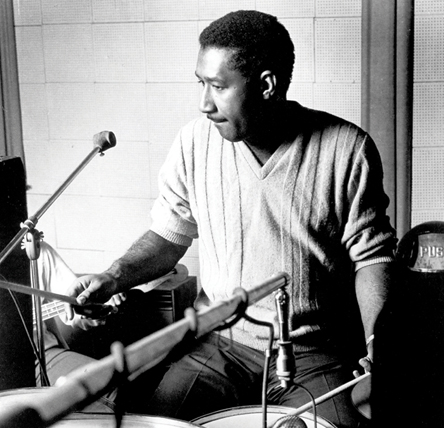
Al Jackson, Jr.
A study of composure, Jackson played just enough notes to make a song work. A member of Booker T and the MGs between 1962 and ’68 and house drummer for Memphis-based Stax Records during the ’60s, Jackson laid down fat grooves on countless soul classics, including Booker T’s “Green Onions” and Wilson Pickett’s “Midnight Hour.”
Jackson always played the song straight, often forgoing even the slightest lick during transitions between verses and choruses. After the MGs broke up, he remained in Memphis and continued drumming with Al Green, as well as doing sessions with Leon Russell, Eric Clapton and Rod Stewart. He was killed in October 1975 during a robbery at his home.
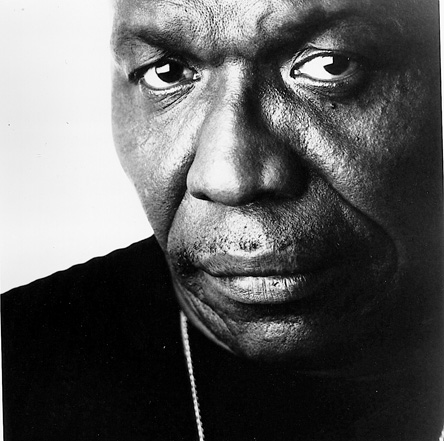
Elvin Jones
Considered the most influential jazz drummer of the 1960s by virtue of his work with John Coltrane, Jones expanded the bebop drumming vocabulary through an aggressive approach that featured multiple levels of rhythm based on a rolling-triplet pulse.
With Coltrane, he served not as a mere accompanist but as an equal partner in improvisation, and together the two musicians built the music to incredible levels of intensity, well represented on Coltrane’s 1964 album A Love Supreme. Since leaving Coltrane in ’66, Jones has primarily led his own group, The Jazz Machine, and he continues to be a dynamic, powerful drummer whose playing often defies transcription but always propels the music.
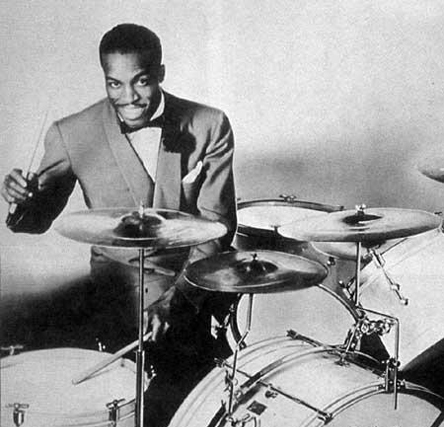
Jo Jones
Through his work with the Count Basie Band from 1934 to ’48, Jones virtually invented the modern jazz drumming style largely by virtue of smooth, swinging ride cymbal playing that gave the music tremendous forward momentum. He is also credited with exploiting the full potential of the hi-hat and is considered one of the greatest brush players who ever lived.
Unlike most of his contemporaries, Jones eschewed the use of multiple “traps” such as woodblocks and cowbells, concentrating on supporting the music with solid time-keeping. In later years he became a mentor to countless younger jazz drummers, and despite a salty personality was affectionately referred to as “Papa” Jo.
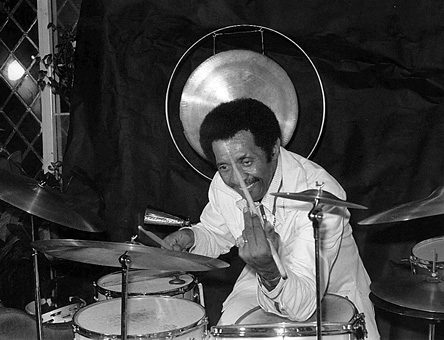
Philly Joe Jones
A consummate bebop drummer, Jones was highly regarded for the power and drive of his time-keeping, the melodic aspects and humor of his solos and his expertise with brushes. He achieved great recognition as a member of the Miles Davis band of the mid-’50s, which included bassist Paul Chambers, pianist Red Garland and saxophonist John Coltrane, and Jones’ playing on the Davis album Milestones is a definitive statement of his style.
He worked for and recorded with a variety of artists after leaving Davis, including Coltrane and pianist Bill Evans, and in later years led the group Dameronia, dedicated to the music of Tadd Dameron.
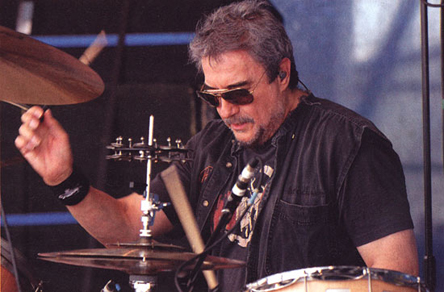
Jim Keltner
One of the most influential of a long line of L.A. studio drummers that includes his predecessors Earl Palmer and Hal Blaine, Keltner has remained current and hip in a career that began during the ’60s. His drumming — idiosyncratic, loose and soulful — helped to elevate the studio musician’s role from that of a generic hired hand to an individual who colors the music with personality and style.
He is known not only for his great feel and sensitivity, but also for bringing a fresh approach to the potentially tedious world of pop music, which explains why he’s been the sideman of choice for artists such as John Lennon, Richard Thompson, Eric Clapton and Bob Dylan.
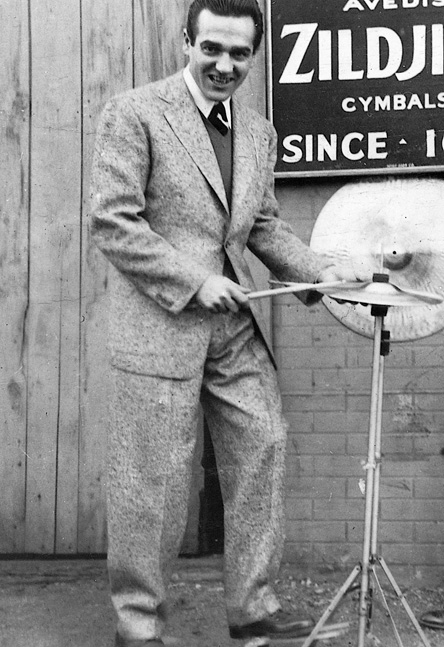
Gene Krupa
Through his work with Benny Goodman in the mid-1930s, Krupa became the first “drum star,” bringing the drummer to center stage through flashy drum features such as “Sing, Sing, Sing.” Although sometimes criticized for putting showmanship ahead of musicality, Krupa was a well-schooled performer whose catchy licks and fills inspired generations of drummers who followed, and who paved the way for the big band drumming style of players such as Buddy Rich and Louis Bellson.
After leaving Goodman, Krupa led his own successful band, scoring hits with “Drummin’ Man” and “Drum Boogie,” and later toured extensively with Jazz At The Philharmonic and opened a drum school in New York with Cozy Cole.
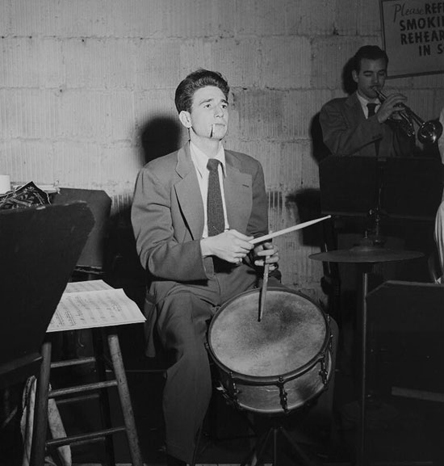
Shelly Manne
The leading proponent of the “West Coast jazz” style of drumming, Manne achieved early renown with the big bands of Les Brown and Stan Kenton, and also distinguished himself as a small-group player with Coleman Hawkins, George Shearing and the L.A. Four, in addition to leading his own groups and touring with Jazz at the Philharmonic.
Manne also did a lot of studio work in L.A., played on hundreds of West Coast jazz albums, and was owner of the popular L.A. jazz club Shelly’s Manne-Hole. His playing was notable for its simplicity and strong sense of swing, and Manne tuned his tom-toms to definite pitches, making his fills and solos especially melodic.
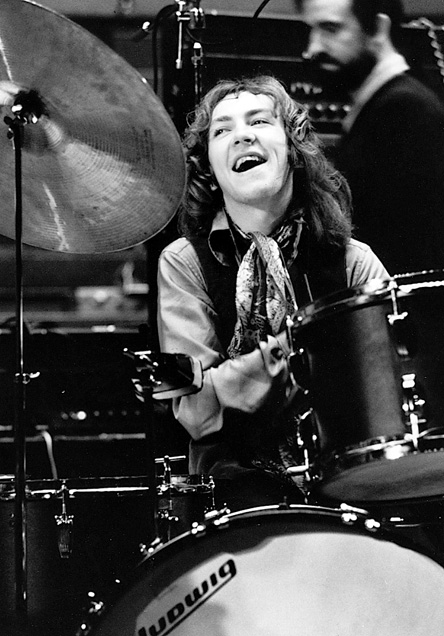
Mitch Mitchell
Mitchell was the world’s first hard-rocking drummer with jazzy chops, and perhaps the most influential of the ’60s. His work with Jimi Hendrix threw every rock and roll drummer for a loop. Anchored by bassist Noel Redding’s steady hand, Mitchell successfully blended the improvisational freedom of jazz drumming with the speed, power and flash of rock.
In the process, he developed a unique chemistry with Hendrix’s unprecedented guitar playing that has never been equaled. He left the band in 1970 when Hendrix began working with Buddy Miles, and after the guitarist’s death later that year, resurfaced only occasionally to do gigs with Larry Coryell, Jack Bruce and Terry Reid.
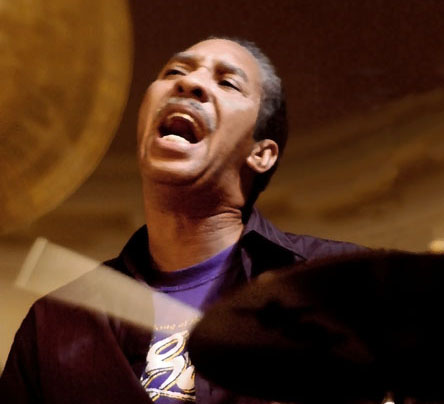
Zigaboo Modeliste
Modeliste’s work with the legendary New Orleans funk band the Meters inspired scores of drummers to try to “turn the beat around.” By combining the steady pulse of r&b with the reckless street beats of second-line brass bands, Modeliste devised a loose, linear drum-set style that used every rhythmic permutation he could possibly fit into a bar of 4/4 without repeating himself.
He started as the drummer in Fats Domino’s backup band, which eventually became the Meters. The band was best known for tracks like “Hey Pocky Way” and “Cissy Strut,” but came to an acrimonious end in 1983, after which Modeliste played with Keith Richards’ New Barbarians.
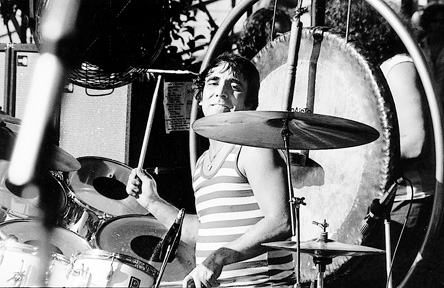
Keith Moon
While his loony reputation with The Who overshadowed his musicianship, Moon was the most experimental rock drummer of his day. He was one of the first to use a double-bass kit, and had an infectiously reckless drumming style. Witness the end of the band’s first U.S. single “My Generation,” where he thrashes wild triplets around the kit, and continues straight through the fade-out.
Moon was known to throw in rolls and crash accents where they wouldn’t commonly go. He was also known for obliterating drum sets and driving cars into swimming pools. Moon died of a drug overdose in 1978. In his world, the rules were meant to be broken.
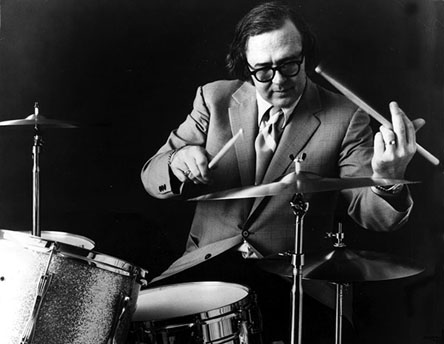
Joe Morello
First coming to attention with pianist Marian McPartland in the early 1950s, Joe Morello quickly became known for his exceptional technique and musicality. In ’56 Morello joined the Dave Brubeck Quartet, who had a #1 hit with “Take Five,” which was written in 5/4 time and featured a drum solo by Morello that was notable for its phrasing and spaciousness.
Bad eyesight limited his playing career in later years, but Morello has continued to be an influential teacher, passing on the knowledge he gained from George Lawrence Stone and Billy Gladstone, and his 1983 book Master Studies is considered one of the classics of drum instruction.
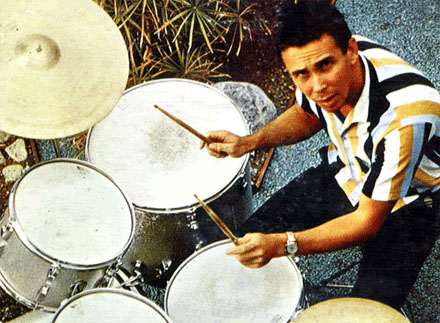
Sandy Nelson
Rock drumming was still in its infancy when Nelson reinvented the drum set as a powerful rock and roll solo instrument with the release of the explosive single “Let There Be Drums” in 1961. The dark, moody track featured only a twangy guitar accompaniment for the one-legged drummer’s tom-heavy ostinatos, which eventually inspired almost every rock drum solo that followed in its wake.
Nelson went on to release a series of semi-successful albums in the ’60s that never quite lived up to this peak of creativity. Other credits prior to his solo work include tours with the Teddy Bears and recording sessions with Gene Vincent.
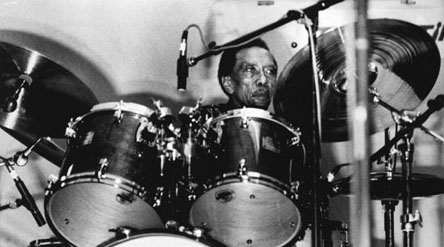
Earl Palmer
Along with Hal Blaine, Palmer goes down in the record books as one of the world’s most recorded drummers — but more importantly, he was a true innovator. His story begins in New Orleans, where he worked with Fats Domino (with whom he recorded “Blueberry Hill”) and later with Little Richard (“Tutti Frutti” and “Lucille”), and invented a new drumming language that emphasized the snare drum backbeat and bass drum downbeat.
In 1957, Palmer moved to L.A. where he found lucrative soundtrack, jingle and album sessions, including stints with B.B. King, Phil Everly, Little Feat, Bonnie Raitt, Tom Waits and Randy Newman. Despite failing health, Palmer continues to play sessions and gigs around L.A.
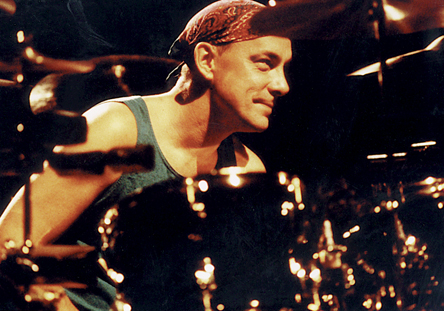
Neil Peart
When Peart replaced John Rutsey in Rush in 1974, he immediately became the progressive rocker after which most teenage drummers patterned themselves. It’s a status that he continues to enjoy, due to his uncanny ability to fashion tricky, muscular, intensely orchestrated drum parts that weave their way around the band’s constantly shifting compositions.
While Peart’s drumming has been accused of being overly calculated, he does have outstanding chops and has introduced generations of drummers to important musical concepts such as odd-time signatures and dynamics. In recent years Peart has begun to study jazz techniques with top drum teacher Freddie Gruber, and produced an album of classic Buddy Rich tracks called Burning For Buddy.
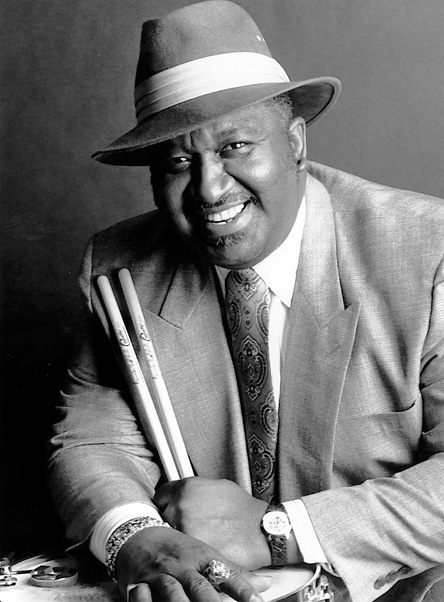
Bernard Purdie
“Pretty” Purdie is the original journeyman soul drummer whose gospel-infused beats fueled the feel for Aretha Franklin, Steely Dan, Solomon Burke and many others. The “Purdie Shuffle” — a rolling dynamo of a groove — was the basis for Bonham’s playing on “Fool In The Rain.” Purdie is the chameleon of r&b drumming, showing up on records by James Brown, Don Covay and King Curtis.
It was in Curtis’ band that Purdie backed Aretha Franklin for the landmark Live At The Fillmore West album, considered by many to be one of the best live performances on record. The band is tight and soulful, with Purdie’s fat beat at the very epicenter of the music.
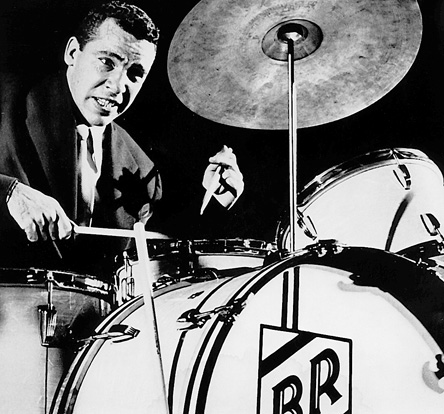
Buddy Rich
The self-proclaimed “world’s greatest drummer,” Rich possessed a technical command of his instrument that has never been equaled. He began his career as a child star in vaudeville as “Traps, The Drum Wonder,” afterwards gravitating toward jazz and working with Artie Shaw, Art Tatum, Jazz At The Philharmonic and Tommy Dorsey before starting his own big band.
Recordings such as “West Side Story” displayed Rich’s incredible speed and finesse, which often overshadowed the fact that he was also a superb accompanist with a solid time feel. Although known as a tough band leader with a volatile personality, Rich’s humor made him a popular, frequent guest on Johnny Carson’s Tonight Show during the ’70s, giving him tremendous public exposure.
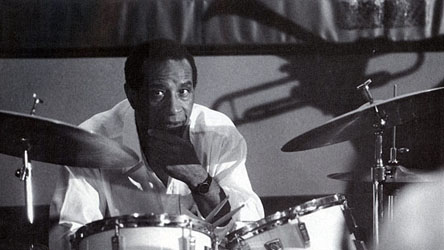
Max Roach
Building on the style of Kenny Clarke, Roach became the definitive bebop drummer of the ’40s through his work with Charlie Parker, Dizzy Gillespie and Bud Powell. As his career continued, his drumming adapted to the needs of various styles, playing hard bop in the band he co-led with Clifford Brown, “cool” jazz on Miles Davis’ “The Birth Of The Cool” and avant-garde jazz with Anthony Braxton and Cecil Taylor.
He is widely hailed as an inventive soloist, and has written a number of solo drum-set compositions such as “The Drum Also Waltzes.” Always seeking to expand the role of the drum set, Roach has played with string quartets and symphony orchestras, and founded the jazz-based percussion ensemble M’Boom.
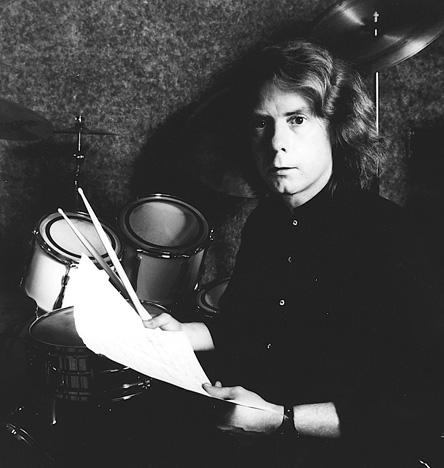
Michael Shrieve
As soon as Shrieve launched into his solo on Santana’s “Soul Sacrifice” halfway through the Woodstock movie, rock fans took notice of the 17-year-old drummer from the San Francisco Bay Area. While Shrieve has never topped the excitement of those few minutes of film, he went on to create a distinguished career both as a solo artist and as a sideman after leaving Santana in 1976.
He recorded a string of jazzy solo albums, and played with acts like Automatic Man in ’76, David Crosby in ’71 and even the Rolling Stones in ’79. Yet Shrieve’s most lasting contribution was his introduction of complex Latin drum-set rhythms to the Woodstock generation.
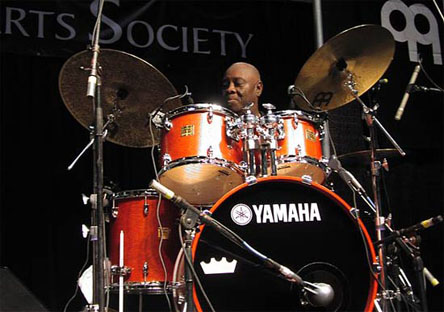
John “Jabo” Starks
Along with Clyde Stubblefield, Starks virtually invented funk drumming with his ridiculously syncopated grooves on James Brown’s late ’60s and early ’70s jams. Brown’s live show at one time had as many as five drummers, but when Starks joined the band, only he and Stubblefield were left, sometimes sharing duty on the stage or switching on and off according to Brown’s whimsy.
Earlier in his career, Starks played on some of blues singer Bobby “Blue” Bland’s biggest hits, which is where he caught Brown’s attention. It’s safe to say that without Starks’ extraordinary contribution to funk drumming, many of today’s hip-hop and r&b grooves wouldn’t exist.
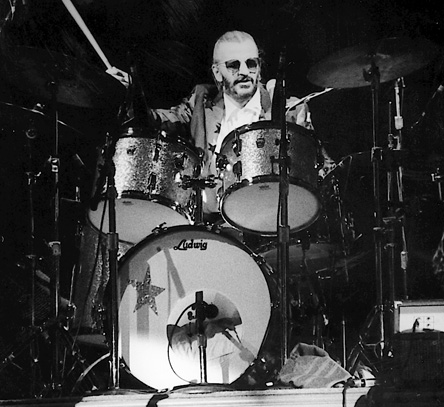
Ringo Starr
Starr is arguably the single most influential rock drummer of all time. He was born Richard Starkey on July 7, 1940, and gained acclaim in Liverpool playing club gigs with Rory Storme And The Hurricanes in the late ’50s. Starr began drumming with the Beatles in ’61 and remained until the band’s demise in ’70.
During those years he literally wrote the rules for pop drumming by providing steady tempos, in-the-pocket feels and hook-laden drum fills for Lennon and McCartney’s timeless material. He has long been a target for critics who complain that his style is too elementary, but simplicity proved to be a virtue in his hands, and became the prototype for every songwriter’s drummer.
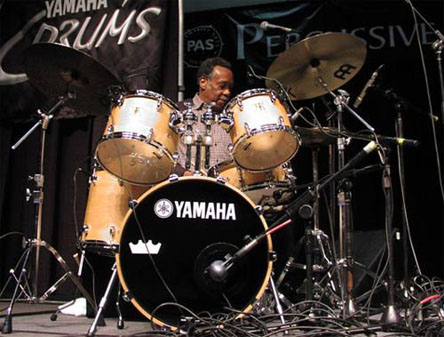
Clyde Stubblefield
Born in Chattanooga, Tennessee, Stubblefield ended up in Macon, Georgia, playing with soul great Otis Redding and blues guitarist Eddie Kirkland, when he caught James Brown’s eye. With Brown, Stubblefield played intricate, rolling rhythms, snapping pops on the snare drum and staying “hot on the 1” with the kick. His oft-sampled drum break on “Funky Drummer” is a staple of dance remixes and rap tunes.
While Brown has had many other fine drummers like Melvin Parker and Nat Kendrick, Stubblefield actually helped change the course of black music on tracks like “Cold Sweat” and “Mother Popcorn,” taking r&b and soul and nastifying it into the gritty funk that James Brown preached.
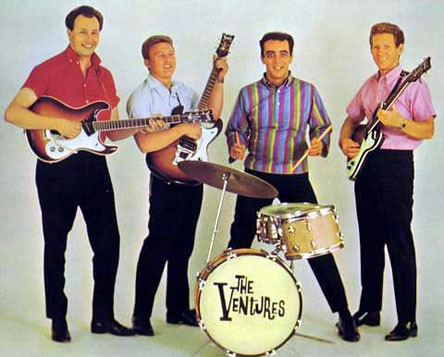
Mel Taylor
After joining The Ventures, the quintessential surf band, in 1962, Taylor became the grand potentate of surf drumming, impacting future rock players (Keith Moon cited The Ventures In Space as one of his favorite records) with his speed and finesse.
The Ventures forged a career out of covering the popular tunes of the day in a frantic twang-bar guitar style replete with mondo rimshots, which made instrumentals like “Telstar,” “Slaughter On 10th Avenue” and “The Lonely Bull,” all the rage with ’60s teens. Taylor passed away in 1996, but not before seeing the reemergence of another era of surf music.
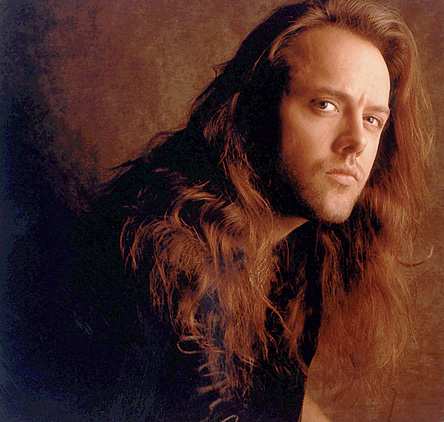
Lars Ulrich
Brandishing chops, ferocity and coverboy charisma, Ulrich resurrected metal drumming from the grave during the ’80s. His double-bass pumping, hard-hitting style with Metallica might be a tad uneven, but was aggressive enough to make him the number one drum hero with young head bangers. Born in Copenhagen, Denmark, on December 26, 1963, Ulrich spent most of his youth studying tennis.
But when his family moved to Los Angeles in ’80, he abandoned his athletic ambitions and — inspired by European groups like Iron Maiden, Saxon and Motorhead — formed Metallica. After taking a few years off, Metallica came back in ’96 with the release of the album Load and a headline spot on the Lollapalooza tour.

J.M. Van Eaton
Before rock and roll was run by corporate moguls, it was a fairly open playing field managed by visionaries who ran small labels. One of these was Sam Phillips, who owned Sun Studios in Memphis, where Elvis Presley cut his early records and J.M. Van Eaton later became the house drummer.
His herky-jerky playing on Jerry Lee Lewis’ “Whole Lotta Shakin’ Goin’ On” is a breathless example of his fiery drumming, a cross between country and swing, which influenced the rockabillys and the rockers of the day, including Ringo Starr and Levon Helm. J.M still lives in Memphis and can be seen every Sunday, playing for the Lord with his local church band.
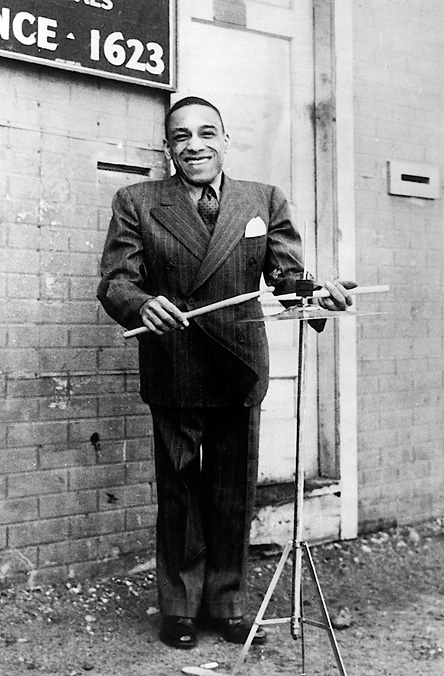
Chick Webb
Equally respected as a drummer and bandleader, William “Chick” Webb had a driving, explosive style that strongly influenced later drummers such as Gene Krupa and Buddy Rich. Although he was only about four feet tall and was a hunchback, Webb was known for his power behind the kit as well as for his imaginative breaks and fills that were less militaristic than those of his contemporaries and that combined duple- and triple-meter patterns.
For several years Webb led the band at New York’s Savoy Ballroom, and Webb’s group regularly defeated rival bands during the ballroom’s famous “cutting” contests. Webb also discovered singer Ella Fitzgerald, who led Webb’s band for several years after he died at age 32.
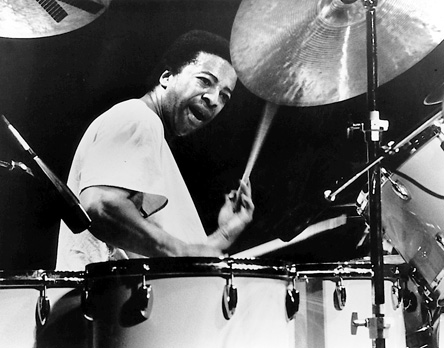
Tony Williams
After joining Miles Davis’ band in 1963 at age 17, Tony Williams quickly became one of the most influential drummers in jazz history as part of the band that included bassist Ron Carter, pianist Herbie Hancock and saxophonist Wayne Shorter. His approach was rooted in the styles of Max Roach, Philly Joe Jones, Art Blakey and Roy Haynes, but Williams combined elements of rock into a style that modernized jazz drumming and foreshadowed fusion.
After leaving Davis, Williams formed the band Lifetime with organist Larry Young and guitarist John McLaughlin, and also made a number of solo albums that displayed his unique blend of jazz and rock, while the more traditional side of his playing was maintained with The Great Jazz Trio.
